Archives
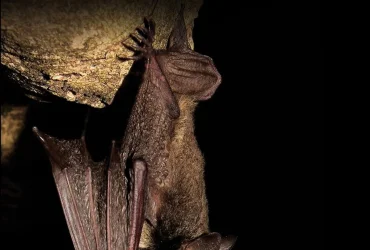 v6i1.129
v6i1.129ISSN: 1800-427X (print)
eISSN: 1800-427X (online)
DOI:10.47605/tapro.v6i1.129
Submitted date: 11 January 2013
Accepted date: 18 March 2014
Published date: 29 June 2014
Pp. 53–54.
First confirmed record of Calodactylodes aureus (Reptilia) from Karnataka, India
B. Srinivasulu*, C. Srinivasulu, T.A. Shah, G. Devender & H. Kaur
*Corresponding author. E-mail: bharisrini@gmail.com
The Indian Golden Gecko Calodactylodes aureus (Beddome, 1870) was known originally from the Tirupati hills in the Seshachalam range and the Velikonda range. It is listed under Schedule I of the Indian Wildlife Protection Act (1972) as it was considered rare, being found at the time only in the Seshachalam range. Subsequently, researchers have revealed the presence of this species from the Papikonda Hills (Perantalapally) in Khammam District, Maredumilli in East Godavari District, Araku Valley and Ananthagiri Hills in Vishakhapatnam District and Kadapa Hills from Andhra Pradesh, Niyamgiri hill ranges of Rayagada, Kalahandi Districts in Odhisha and Vellore and Balmathi Hill, Tamil Nadu. Furthermore, this species was recently reported from Sathgar Hill, Kailasagiri Hill (Ambur) and Valli Malai in Vellore District, Sayed Basha Malai in Krishnagiri District, Nedumkunam Hill, Melthiruvadathanur (Morambu), Karadi Parai and Sathanur Dam in Tiruvanamalai District and the Gingee Hills in Villupuram District of Tamil Nadu. Reddy et al. (2013) reported the occurrence of this species from Nigidi reserve forest area in the Anantapur District of Andhra Pradesh and this is the westernmost locality record of this species to date.
Section Editor: John Rudge
eISSN: 1800-427X (online)
DOI:10.47605/tapro.v6i1.129
Submitted date: 11 January 2013
Accepted date: 18 March 2014
Published date: 29 June 2014
Pp. 53–54.
First confirmed record of Calodactylodes aureus (Reptilia) from Karnataka, India
B. Srinivasulu*, C. Srinivasulu, T.A. Shah, G. Devender & H. Kaur
*Corresponding author. E-mail: bharisrini@gmail.com
The Indian Golden Gecko Calodactylodes aureus (Beddome, 1870) was known originally from the Tirupati hills in the Seshachalam range and the Velikonda range. It is listed under Schedule I of the Indian Wildlife Protection Act (1972) as it was considered rare, being found at the time only in the Seshachalam range. Subsequently, researchers have revealed the presence of this species from the Papikonda Hills (Perantalapally) in Khammam District, Maredumilli in East Godavari District, Araku Valley and Ananthagiri Hills in Vishakhapatnam District and Kadapa Hills from Andhra Pradesh, Niyamgiri hill ranges of Rayagada, Kalahandi Districts in Odhisha and Vellore and Balmathi Hill, Tamil Nadu. Furthermore, this species was recently reported from Sathgar Hill, Kailasagiri Hill (Ambur) and Valli Malai in Vellore District, Sayed Basha Malai in Krishnagiri District, Nedumkunam Hill, Melthiruvadathanur (Morambu), Karadi Parai and Sathanur Dam in Tiruvanamalai District and the Gingee Hills in Villupuram District of Tamil Nadu. Reddy et al. (2013) reported the occurrence of this species from Nigidi reserve forest area in the Anantapur District of Andhra Pradesh and this is the westernmost locality record of this species to date.
Section Editor: John Rudge
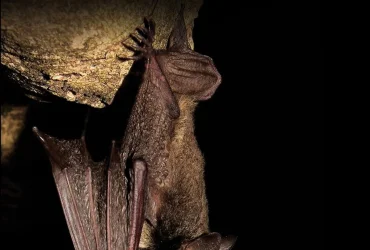 v6i1.128
v6i1.128ISSN: 1800-427X (print)
eISSN: 1800-427X (online)
DOI:10.47605/tapro.v6i1.128
Submitted date: 23 November 2013
Accepted date: 2 April 2014
Published date: 29 June 2014
Pp. 49–52.
Marine Mollusc Diversity along the Southwest Coast of Sri Lanka
C.H.T. Rubesinghe & S.R. Krishnarajah
*Corresponding author. E-mail: dentallium@gmail.com
Molluscan species as well as class-level diversity is highest in the marine environment. The current survey data reveals that Sri Lanka is inhabited by about 240 species of marine molluscs belonging to four of the seven classes representing marine molluscs. The study area, along the southwest coast of Sri Lanka, experiences the southwest monsoon from May to September, which has a significant impact on climate and oceanographic conditions in this region.
Section Editor: Brenden Holland
eISSN: 1800-427X (online)
DOI:10.47605/tapro.v6i1.128
Submitted date: 23 November 2013
Accepted date: 2 April 2014
Published date: 29 June 2014
Pp. 49–52.
Marine Mollusc Diversity along the Southwest Coast of Sri Lanka
C.H.T. Rubesinghe & S.R. Krishnarajah
*Corresponding author. E-mail: dentallium@gmail.com
Molluscan species as well as class-level diversity is highest in the marine environment. The current survey data reveals that Sri Lanka is inhabited by about 240 species of marine molluscs belonging to four of the seven classes representing marine molluscs. The study area, along the southwest coast of Sri Lanka, experiences the southwest monsoon from May to September, which has a significant impact on climate and oceanographic conditions in this region.
Section Editor: Brenden Holland
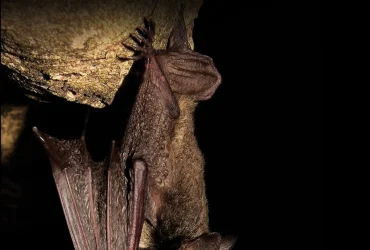 v6i1.127
v6i1.127ISSN: 1800-427X (print)
eISSN: 1800-427X (online)
DOI:10.47605/tapro.v6i1.127
Submitted date: 31 January 2013
Accepted date: 23 April 2014
Published date: 29 June 2014
Pp. 47–48.
A pentastome (Armillifer moniliformis) parasitizing a common rat-snake
T.S.P. Fernando* & V.A.K. Fernando
*Corresponding author. E-mail: saminda@ou.ac.lk
Pentastomes are a group of relatively poorly known parasites that are neglected both in veterinary parasitology text books and curriculum. The pentastomes are currently classified in a separate phylum, Pentastomida, because they exhibit characteristics of both the phylum Arthropoda and Annelid. This group comprises of approximately 100 species of vermiform arthropods that are all obligate parasites of the lower and less often upper respiratory tract of vertebrates. Adult pentastomes are segmented and worm like, measuring 0.5 to 20 cm in length. However they are easily distinguished from any other parasite because they bear 2 pairs of retractile hooks on either side of the mouth. They also have a distinct tongue shaped appearance; hence they are called linguatulids or tongue worms.
Section Editor: Colin Chapman
eISSN: 1800-427X (online)
DOI:10.47605/tapro.v6i1.127
Submitted date: 31 January 2013
Accepted date: 23 April 2014
Published date: 29 June 2014
Pp. 47–48.
A pentastome (Armillifer moniliformis) parasitizing a common rat-snake
T.S.P. Fernando* & V.A.K. Fernando
*Corresponding author. E-mail: saminda@ou.ac.lk
Pentastomes are a group of relatively poorly known parasites that are neglected both in veterinary parasitology text books and curriculum. The pentastomes are currently classified in a separate phylum, Pentastomida, because they exhibit characteristics of both the phylum Arthropoda and Annelid. This group comprises of approximately 100 species of vermiform arthropods that are all obligate parasites of the lower and less often upper respiratory tract of vertebrates. Adult pentastomes are segmented and worm like, measuring 0.5 to 20 cm in length. However they are easily distinguished from any other parasite because they bear 2 pairs of retractile hooks on either side of the mouth. They also have a distinct tongue shaped appearance; hence they are called linguatulids or tongue worms.
Section Editor: Colin Chapman
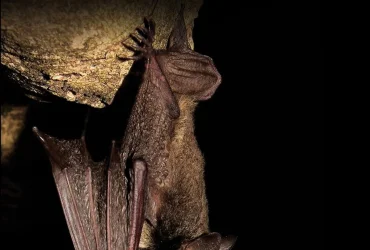 v6i1.126
v6i1.126ISSN: 1800-427X (print)
eISSN: 1800-427X (online)
DOI:10.47605/tapro.v6i1.126
Submitted date: 30 June 2013
Accepted date: 17 January 2014
Published date: 29 June 2014
Pp. 46.
Tachaea spongillicola (Cymothoida: Corallanidae) from West Bengal, India
M.K.D. Roy* & S. Mitra
*Corresponding author. E-mail: malay_7@rediffmail.com
The isopod Tachaea spongillicola (Corallanidae) was described by Stebbing (1907) from the freshwater sponge Eunapius carteri (formerly Spongilla carteri) at the Indian Museum Tank, Kolkata, India. Since then, this species did not appear in literature for nearly hundred years. In 2003, Mariappan et al. reported this isopod from three locations along the course of the Cauvery River near Tiruchirapalli, India. They found this species to occur on three species of prawns. However, during a recent survey at Burdwan (on 18 December 2012), the first author collected six specimens of this species (Registration Number ZSI C 6007/2) on the prawn Macrobrachium lamarrei from Damodar River at Kathgolaghat near Polempur (~2 km SE of Burdwan Town). The size of the isopod specimens varied between 7.6–8.0mm and 2.6–3.5mm. The specimens were found to fully match with the description of Stebbing (1907). Thus this endemic species is here recorded after 106 years from West Bengal.
Section Editor: Wolfgang Wägele
eISSN: 1800-427X (online)
DOI:10.47605/tapro.v6i1.126
Submitted date: 30 June 2013
Accepted date: 17 January 2014
Published date: 29 June 2014
Pp. 46.
Tachaea spongillicola (Cymothoida: Corallanidae) from West Bengal, India
M.K.D. Roy* & S. Mitra
*Corresponding author. E-mail: malay_7@rediffmail.com
The isopod Tachaea spongillicola (Corallanidae) was described by Stebbing (1907) from the freshwater sponge Eunapius carteri (formerly Spongilla carteri) at the Indian Museum Tank, Kolkata, India. Since then, this species did not appear in literature for nearly hundred years. In 2003, Mariappan et al. reported this isopod from three locations along the course of the Cauvery River near Tiruchirapalli, India. They found this species to occur on three species of prawns. However, during a recent survey at Burdwan (on 18 December 2012), the first author collected six specimens of this species (Registration Number ZSI C 6007/2) on the prawn Macrobrachium lamarrei from Damodar River at Kathgolaghat near Polempur (~2 km SE of Burdwan Town). The size of the isopod specimens varied between 7.6–8.0mm and 2.6–3.5mm. The specimens were found to fully match with the description of Stebbing (1907). Thus this endemic species is here recorded after 106 years from West Bengal.
Section Editor: Wolfgang Wägele
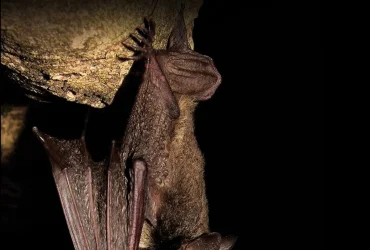 v6i1.125
v6i1.125ISSN: 1800-427X (print)
eISSN: 1800-427X (online)
DOI:10.47605/tapro.v6i1.125
Submitted date: 30 June 2013
Accepted date: 5 May 2014
Published date: 29 June 2014
Pp. 32–45, Pl. 9.
STUDIES ON DIVERSITY, DISTRIBUTION, AND CONSERVATION OF THE BAT FAUNA IN MAHARASHTRA STATE, INDIA
Vishakha S. Korad
*Corresponding author. E-mail: vishakhakorad@yahoo.com
Abstract
Maharashtra state is the third largest by area in India. Maharashtra’s bat fauna comprises eight families, 23 genera, and 41 species, most of which are insectivorous microchiropterans. Eleven of the 41 bat species are found throughout the state whereas 21 species have few colonies with restricted distribution. Five species endemic to South Asia occur in the state. Maharashtra is separated into six divisions in this paper on the basis of geography, topography, and agro-climatic conditions; the presence of bat species and their roosting sites are reported per division. The IUCN status of bat species is listed, as well as endemism. Types of forests in the state and forest cover in each of the six divisions are considered for discussion in the context of bat distribution. Bat species richness and evenness are compared using the Shannon-Weaver (S-W) Index and Simpson’s indices (Reciprocal and Diversity). The results are discussed from the viewpoint of conservation of bat fauna in forest areas in general and the Western Ghats region of the state in particular.
Key words : biogeography, Chiroptera, ecology, roosting, species richness, Western Ghats
Section Editor: Asoka Yapa
eISSN: 1800-427X (online)
DOI:10.47605/tapro.v6i1.125
Submitted date: 30 June 2013
Accepted date: 5 May 2014
Published date: 29 June 2014
Pp. 32–45, Pl. 9.
STUDIES ON DIVERSITY, DISTRIBUTION, AND CONSERVATION OF THE BAT FAUNA IN MAHARASHTRA STATE, INDIA
Vishakha S. Korad
*Corresponding author. E-mail: vishakhakorad@yahoo.com
Abstract
Maharashtra state is the third largest by area in India. Maharashtra’s bat fauna comprises eight families, 23 genera, and 41 species, most of which are insectivorous microchiropterans. Eleven of the 41 bat species are found throughout the state whereas 21 species have few colonies with restricted distribution. Five species endemic to South Asia occur in the state. Maharashtra is separated into six divisions in this paper on the basis of geography, topography, and agro-climatic conditions; the presence of bat species and their roosting sites are reported per division. The IUCN status of bat species is listed, as well as endemism. Types of forests in the state and forest cover in each of the six divisions are considered for discussion in the context of bat distribution. Bat species richness and evenness are compared using the Shannon-Weaver (S-W) Index and Simpson’s indices (Reciprocal and Diversity). The results are discussed from the viewpoint of conservation of bat fauna in forest areas in general and the Western Ghats region of the state in particular.
Key words : biogeography, Chiroptera, ecology, roosting, species richness, Western Ghats
Section Editor: Asoka Yapa
Hubungi Kami
The ultimate aim of the journal is to provide an effective medium for communication of the latest and best scientific information.
Copyright © 2020 Taprobanica. All Rights Reserved
Jasa Pembuatan Website by IKT




